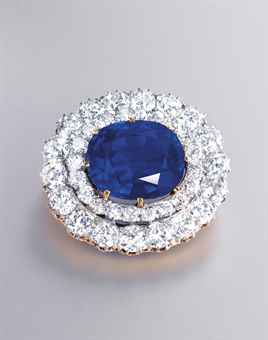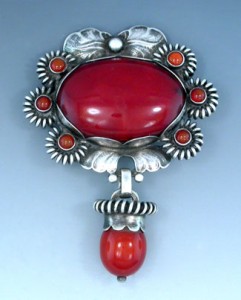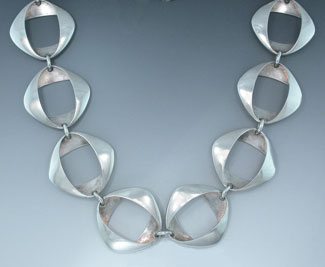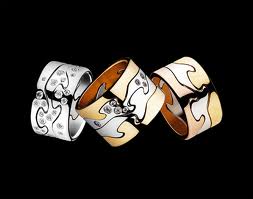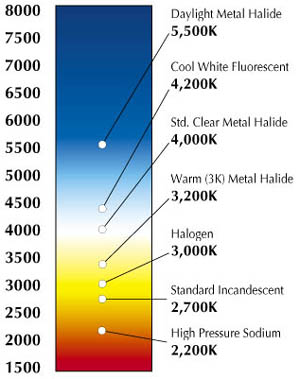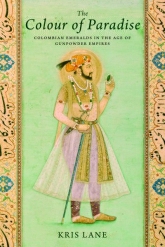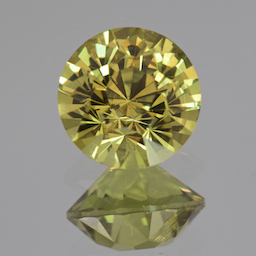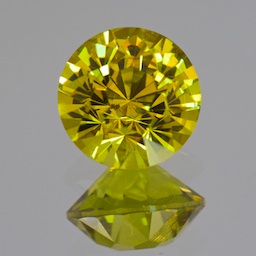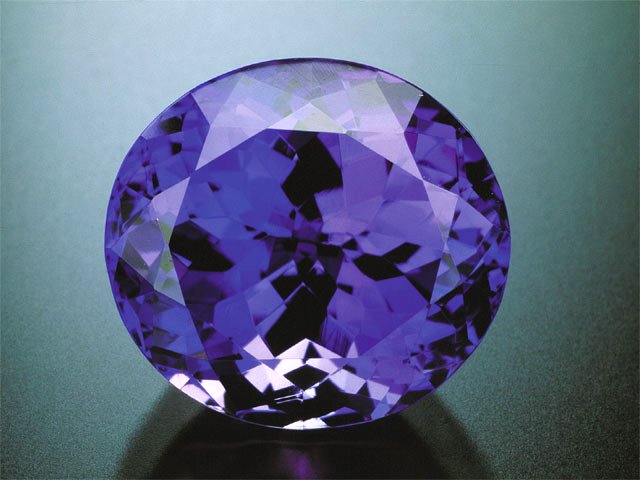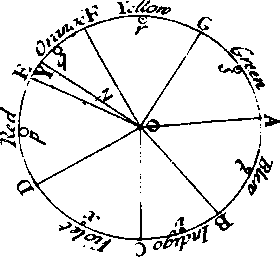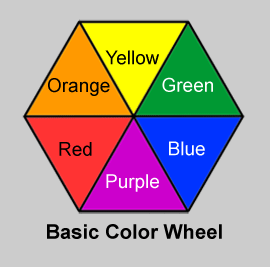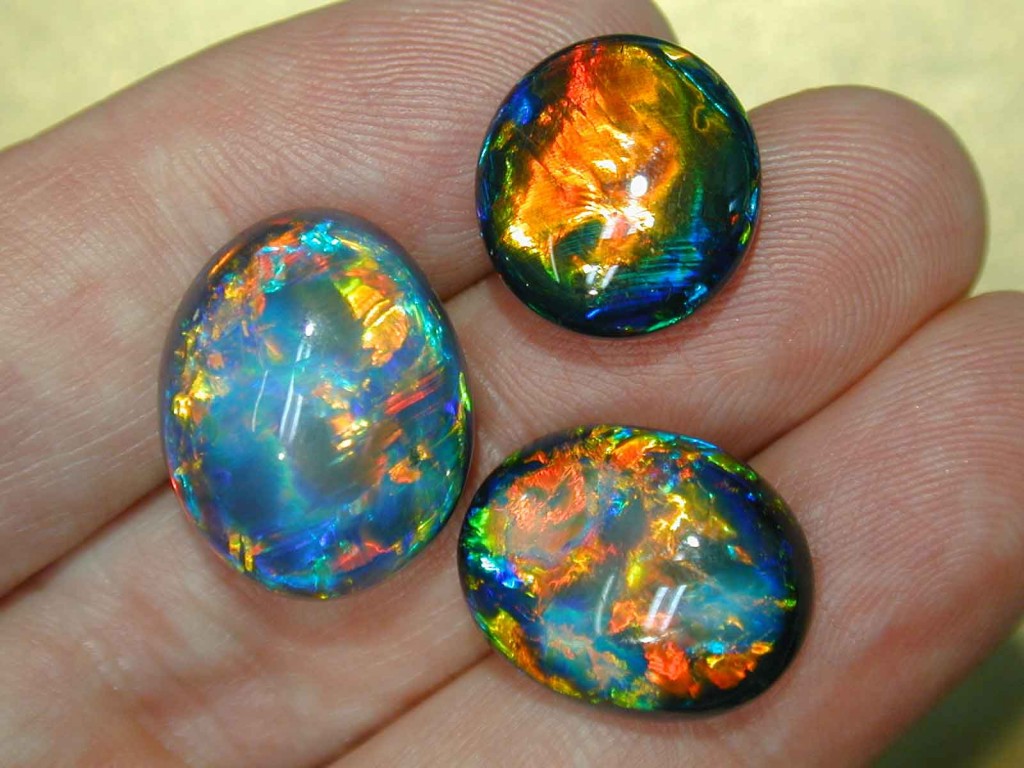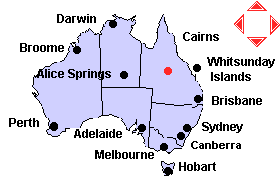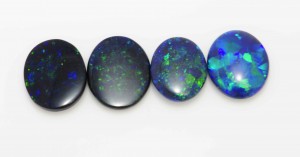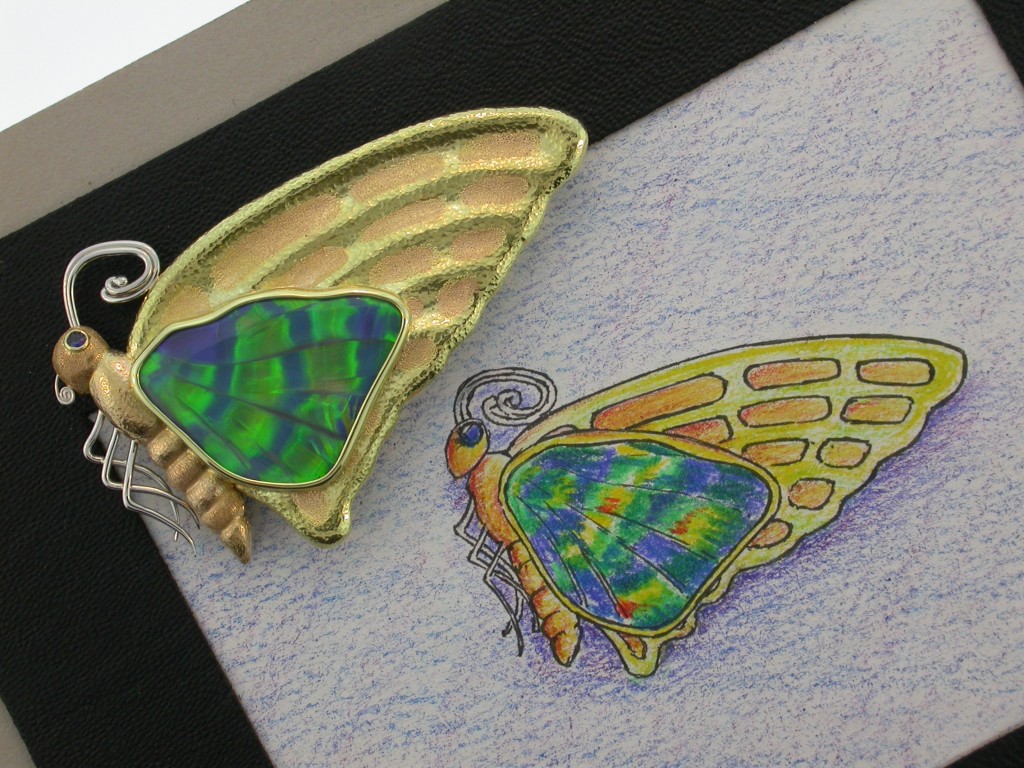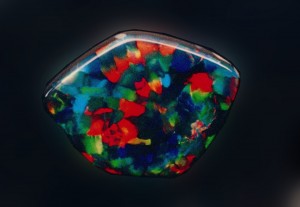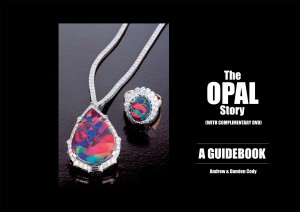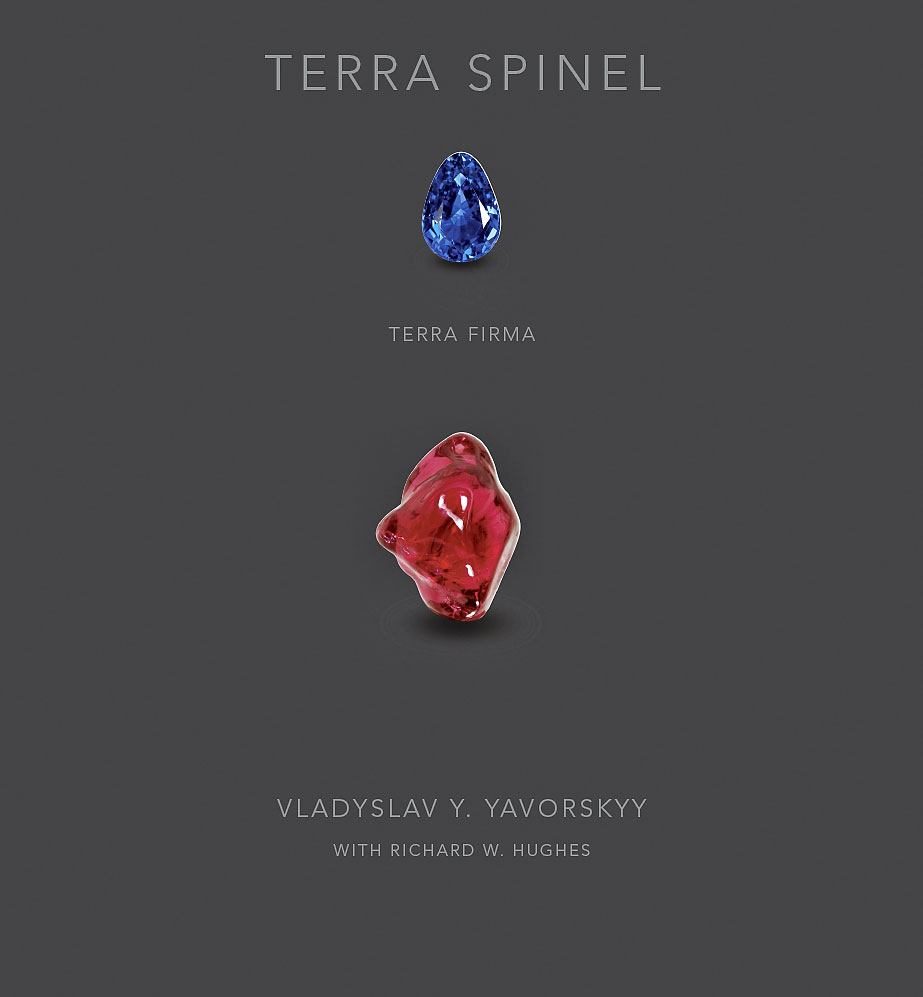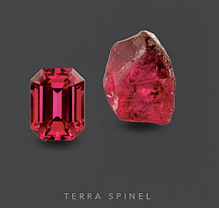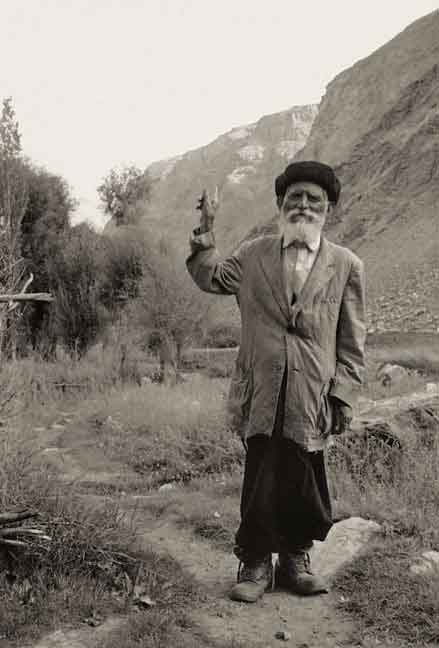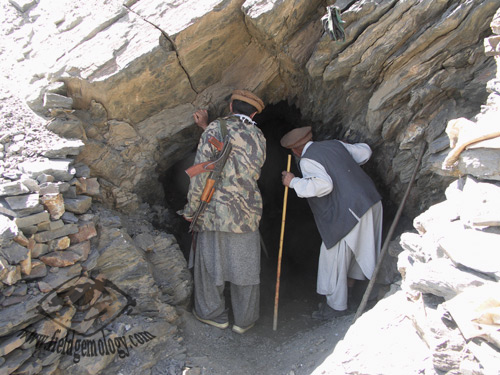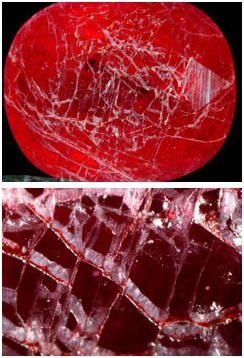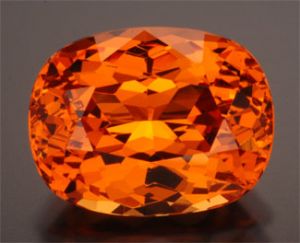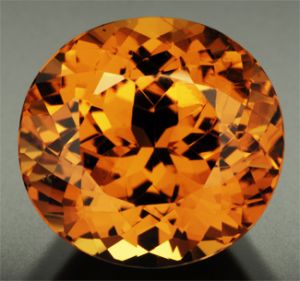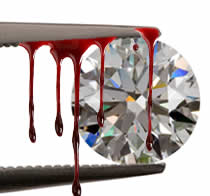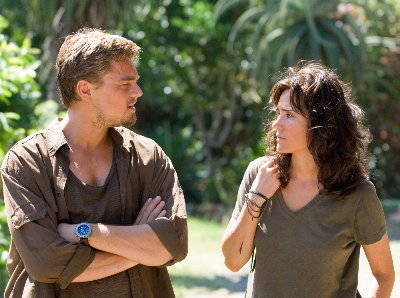by Richard W. Wise, ©2011
Dateline: Hong Kong
A New World’s Record:
November 29th, Christie’s Auction House, Hong Kong, sold a 26.41 carat Kashmir sapphire for 3,838,508 or $145,342.00 per carat. This sale establishes a new world’s record price of Kashmir sapphires sold at auction, besting the former world’s record also established at Christie’s (New York) for the 22.66 carat Hill Sapphire which sold in April 2007 for $3,064,000 or $135.216.00 per carat.
Kashmir sapphires were originally found on a small hillock 13,000 feet up in the mountains of the now disputed Indian state of Kashmir in 1881-1882. The harsh conditions at this altitude meant that the mines could only be worked about one month per year. By 1887 the output of the mines had diminished substantially. The original lessee abandoned the diggings in 1905. Four other groups had a go at it with little success and the sites were more or less abandoned in 1928. A bit of material is still occasionally found, alluvial material at the bottom of the ridge, but the major production of Kashmir sapphire lasted a mere six years.
Kashmir stones are highly esteemed for their color, a vivid purplish blue, a hue often described as “cornflower blue.” Others, most notably Richard W. Hughes, author of the seminal book Ruby and Sapphire, describe the finest color as a Pepto Bismol bottle blue. The problem with this characterization is that Pepto Bismol bottles are now pink—but there are those of us who are old enough to recall when the bottles were a bright medium blue. I recall seeing only one stone of this description and it hailed from Sri Lanka.
Kashmir’s famous characteristic, however, is the silky, milky or fuzzy texture that somewhat diminishes the diaphanity (crystal) of the stone. Myriads of tiny inclusions that resemble dust caught in a ray of sunlight or a sub-microscopic milky way, will, when present, diffract and refract the light, causing the stone to take on a velvety glow. Similar inclusions are sometimes found in gems from Madagascar and Sri Lanka, but absent geographical certainty, these “Kashmir type” sapphires do not command nearly the price of those with old mine provenance. The current record holder was accompanied by four laboratory reports certifying Kashmir origin. This, of course, begs the question: If gems are all about beauty and sapphires from other locations have all the characteristics of the finest Kashmir, why does anyone care where the stone is from? The short answer is branding. The market recognizes a value in stones from the original mine. It is also fair to say that although stones can be found with the characteristic glow, very, very few approach the pinnacle of Kashmir color. I have only seen two stones that can be described as #1 Kashmir color and both were from the old mine.
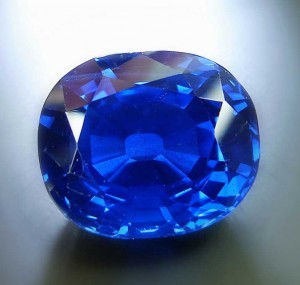
What a difference a light makes; the current record holder before a re-cut shaved a single carat. Note the large culet visible through the table and the characteristically velvety texture or crystal. Photo courtesy Stone Group Labs.
Rapidly Escalating Prices:
Kashmir prices have been increasing steadily since the late 1980s. According to connoisseur and author Benjamin Zucker, a twenty carat fine quality Kashmir sapphire was worth $25,000 per carat in 1976, though I recall an exceptional stone that sold at auction in the early 1980s for $12,500 per carat. By the turn of the last century prices for extra-fine examples at auction passed $100,000 per carat. Pricing must be taken with a grain of salt. Given varying qualities, the vicissitudes of auction houses, and the lack of any real standardized grading system, it is difficult to compare stone to stone.
Prices for premium gemstones, fancy color diamonds, type IIa colorless diamonds, ruby, sapphire, emerald and lately spinel, have all increased markedly since the 2008 bust. This can be traced to a lack of confidence in paper currencies, generally, and the dollar and Euro in particular.
Connoisseurship–Opinions Vary:
Bear Williams of Stone Group Labs, the first gem laboratory to evaluate the new record holder, was impressed. “My hair kinda stood up on end, it had some sort of magic,” he said describing his first look at the sapphire. When Williams saw it, the stone weighed over 27 carats before it was re-cut slightly and re-polished. From all indications the stone is quite superior to the Hill Sapphire, which American Gem Labs President Christopher Smith described as a “nice stone.” in 2007. Smith rated the former record holder, the Hill Sapphire, at an 8-8.5 on a 1-10 scale. Williams puts this new one well into the 9s, “maybe a 9.8” he says. Chris Smith at American Gem Labs, who did a full quality evaluation, gives the stone an overall Total Quality Integration Rating (TQIR) of Exceptional and a color grade of 2.5 (1-10 scale). Note that AGL’s TQIR factors in rarity, together with quality factors. A five carat Kashmir or the same quality would be graded Excellent.

